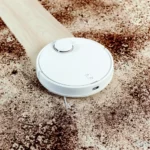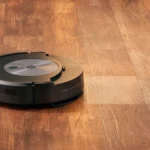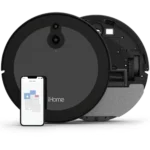Having a clean home has become easier than ever with the advent of smart vacuum cleaners. However, the performance of these high-tech devices relies on several design elements that can affect their effectiveness in cleaning. From the mechanical components to technological features, interface elements to ergonomic factors, and power consumption- all play a role in determining a smart vacuum cleaner’s performance. This article will delve into these critical aspects one-by-one, providing insights into how each can impact the cleaner’s effectiveness, making it possible for you to select the best home cleaning device for your needs.
Mechanical Components:
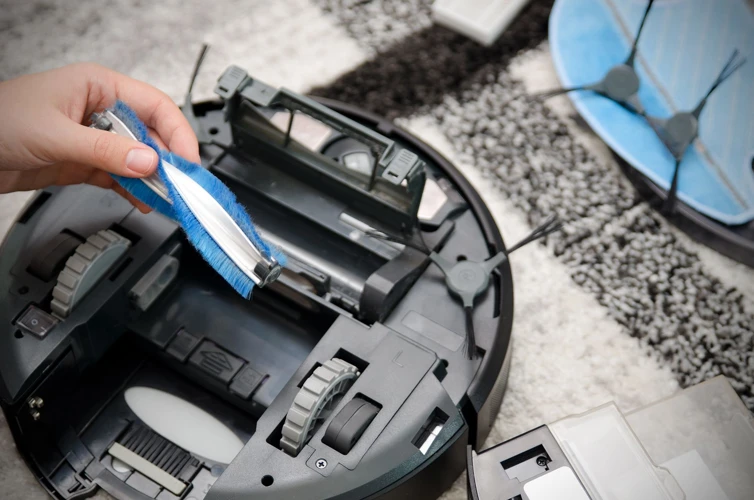
When it comes to smart vacuum cleaners, the design and construction of the mechanical components play a major role in determining its overall performance. From the brush design to the noise reduction processes, each element serves a specific purpose. In this section, we’ll take a closer look at some of the key mechanical components that can make or break a smart vacuum’s effectiveness. Let’s dive in and explore how variation in suction power, dirt canister size, and brush design can affect the quality of cleaning.
Brush Design
One of the most important mechanical components that can greatly affect the performance of a smart vacuum cleaner is its brush design. The right brush design, paired with optimal suction power, can ensure that the device is able to thoroughly clean floors and carpets.
Types of Brush Designs: There are two main types of brush designs found in smart vacuum cleaners – bristle brushes and rubberized brushes. Bristle brushes are most commonly found in traditional vacuum cleaners, and have been around for many years. They are very effective at picking up larger debris, such as pet hair and dirt. However, they tend to get tangled up more easily and are less effective at picking up fine dust and smaller particles.
Rubberized brushes, on the other hand, are a newer technology that has become increasingly popular in smart vacuum cleaners. These brushes are made of a soft, rubberized material that helps them to conform to the contours of the floor or carpet they are cleaning. This makes them more effective at picking up dust and smaller particles. They also tend to be less likely to get tangled up than bristle brushes.
Adjustable Brush Height: Another important aspect of brush design for a smart vacuum cleaner is adjustable brush height. This allows the device to better adapt to different types of flooring, such as carpets or hardwood floors. It can also help to ensure that the brushes are not too close to the floor, which can cause damage.
Cleaning Performance: Ultimately, the effectiveness of a smart vacuum cleaner’s brush design will be judged by its cleaning performance. The right brush design will allow the device to pick up all types of debris, from large pieces of dirt and dust to smaller particles. It will also work well on a variety of surfaces, such as tile, hardwood, and carpet.
For more information on top features of a smart vacuum cleaner, check out our guide to the top features of a smart vacuum cleaner.
Suction Power and Efficiency
When it comes to smart vacuum cleaners, one of the most important design elements affecting performance is suction power and efficiency. A higher suction power generally means better cleaning performance, but it’s not as simple as just looking for the highest number. In fact, a vacuum with too much suction power can damage some types of flooring or be less efficient on others.
To optimize suction power and efficiency, manufacturers often use a combination of design features. Here are some of the key components that affect suction power and efficiency:
- Motor: The vacuum’s motor is the primary source of suction power. A more powerful motor will generally mean better suction, but it will consume more energy and generate more noise.
- Filtration: Particles of dust and debris can clog the motor and reduce suction power. Quality filtration systems can prevent this from happening and prolong the vacuum’s lifespan.
- Brushes: Some smart vacuum cleaners have rotating brushes that can agitate dirt and debris, making it easier to suction them up. However, the design of the brushes can also affect performance – for example, some brushes are better suited for carpets, while others are designed to tackle hardwood floors.
- Hose and attachments: The size and shape of the vacuum’s hose and attachments can affect suction power and efficiency. For example, an attachment with a narrow opening may have better suction power but be less efficient at covering a large area.
It’s important to note that suction power and efficiency are just one part of the overall cleaning performance of a smart vacuum cleaner. Other factors like brush design, navigation technology, and app compatibility can also play a significant role. To learn more about the pros and cons of different smart vacuum styles, check out our article on smart vacuum design tips. For a deeper dive into the design elements that impact smart vacuum performance, take a look at our guide to smart vacuum designs unseen.
Dirt Canister Size
One of the most important elements that can affect a smart vacuum cleaner’s performance is the dirt canister size. This component determines how much dirt and debris the vacuum can collect before needing to be emptied, which can impact the device’s overall efficiency and usability.
A larger dirt canister size means that the device can collect more dirt and debris before requiring attention. This is especially important for larger homes or spaces with a lot of foot traffic, where the vacuum may need to run for an extended period of time. On the other hand, a smaller canister may be more difficult to manage, as it may need to be emptied more frequently.
When considering the size of the dirt canister, it’s also important to consider the type of debris being collected. Some smart vacuums are designed specifically for pet hair or hardwood floors, while others are more versatile and can handle a wider range of debris. In either case, it’s important to evaluate the vacuum’s specifications to ensure that it can handle the specific cleaning needs of your home.
In addition to the size of the canister, it’s also important to consider the ease of emptying and cleaning the component. Some vacuums feature detachable canisters that can be easily emptied and reattached, while others may require more time-consuming processes. This can have a big impact on the overall user experience and may affect how frequently the vacuum is used.
To ensure the dirt canister size is optimized for your specific needs, consider consulting with a smart vacuum expert or researching smart vacuum design tips to help make an informed decision. By taking the time to evaluate this important element, you can help ensure that your smart vacuum is as effective and efficient as possible.
Noise Reduction Processes
Designing a smart vacuum cleaner isn’t just about maximizing its performance, but also about minimizing any inconveniences to the user. One of the most significant inconveniences that a smart vacuum cleaner can present is excessive noise. Here are some of the noise reduction processes that manufacturers implement in their smart vacuum cleaner designs:
Noise Insulation:
Smart vacuum cleaners have several internal components that produce noise. By covering these components with foam, manufactures can reduce the noise level in a vacuum cleaner.
Motor Design:
The motor is the component that generates the suction power for a vacuum cleaner. An efficient motor that produces less sound is necessary. Some manufacturers use brushless motors with a low vibration design to reduce the noise produced when the vacuum cleaner is in use.
Noise Reduction Software:
There is noise associated with the processing of data during a vacuum cleaner’s operations. By implementing noise reduction software, vacuum cleaner manufacturers can remove noise in the signal, particularly when using image recognition technology
Smart Navigation:
Smart navigation is another way to minimize noise impact. Vacuum cleaners that use algorithms to determine cleaning patterns can limit unnecessary movements, which reduces noise level.
Sound Proof Materials:
Developers have been experimenting with new soundproof materials to block noise generated by a vacuum cleaner. There are attempts to use composites for the instrument interface, like carbon fiber, with lower sound conductive materials, like wood weave.
Anti-vibration Technology:
Manufacturers can incorporate rubber mounts, suspension systems, and other technologies to absorb noise and lessen the vibration of the vacuum cleaner’s parts.
These are some of the specific noise reduction processes that go into the design of a smart vacuum cleaner. By reducing noise-making factors, designers can make using smart vacuum cleaners more convenient and comfortable for users.
Technological Features:
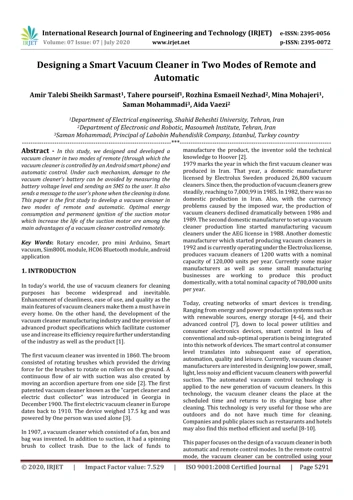
As technology continues to advance at a rapid pace, it’s no surprise that the list of technological features available in smart vacuum cleaners grows longer every day. From sensors that can detect even the smallest particle of dirt, to voice control integration that allows for hands-free operation, the possibilities are endless. In this section, we’ll explore some of the key technological features that can affect a smart vacuum cleaner’s performance and make cleaning your home a breeze. So, sit back, and let’s delve into the world of cutting-edge smart vacuum technology.
Sensor Technology
When it comes to smart vacuum cleaners, one of the most important technological features that can significantly affect their performance is their sensor technology. The sensors allow the vacuum to navigate around your home and detect obstacles, such as walls and furniture, to avoid collisions and perform efficient cleaning. Let’s take a closer look at some of the key sensor technologies used in smart vacuum cleaners:
| Vision Sensors | Cliff Sensors | Light Detection and Ranging (LIDAR) |
|---|---|---|
| Vision sensors use cameras to take images of the surrounding environment and process them using computer vision algorithms to detect and avoid obstacles. This technology allows for accurate object detection and mapping of the home. | Cliff sensors, also known as drop sensors, use infrared technology to detect edges, such as stairs and ledges, to prevent the vacuum from falling off and damaging itself or your home. | LIDAR uses laser technology to create a 3D map of the environment, enabling the vacuum to detect and avoid obstacles with high precision, even in low light conditions. |
Each of these sensor technologies has its own advantages and disadvantages in terms of cost, accuracy, and complexity. However, the best smart vacuum cleaners often use a combination of these sensors to provide maximum navigation and cleaning performance. When purchasing a smart vacuum cleaner, it is important to consider the sensor technology used and ensure that it meets your specific needs and requirements.
Voice Control Integration
Smart home technology has revolutionized the way we interact with our household appliances. Voice control integration is one of the most exciting technological features that smart vacuum cleaners offer. With voice control integration, users can control their smart vacuum cleaners via voice commands, allowing them to multitask and control their device even when their hands are full.
Here are a few benefits of using voice control integration for your smart vacuum cleaner:
- Convenience: Voice control integration eliminates the need to physically interact with your device, adding a new level of convenience to your cleaning routine.
- Ease of Use: Unlike the traditional way of using buttons or a remote control, with voice control integration, users can effortlessly maneuver the device with just their voice.
- Accessibility: Voice control integration makes it possible for people with disabilities or mobility concerns to clean their homes effectively.
When incorporating voice control integration into a smart vacuum cleaner, developers focus on integrating with popular voice assistants such as Amazon Alexa, Google Assistant, and Siri. Users can give commands such as “Alexa, ask my robot to start cleaning,” and the smart vacuum cleaner will respond accordingly.
To enable voice control integration on your smart vacuum cleaner, you need to ensure that your device is connected to a compatible smart home system. Once you have set up your device, you can use voice commands to start, stop, or pause a cleaning cycle, schedule cleaning times, and check the device’s battery level.
Above all, voice control integration adds a level of fun to cleaning. It allows users to engage with their devices more personally, making the whole cleaning process much more pleasant.
Smart Navigation
One of the key features of a smart vacuum cleaner is its ability to navigate efficiently in order to clean the entire floor without missing any spots. This is where smart navigation technology comes into play. There are multiple ways in which a smart vacuum cleaner can navigate around a room:
| Navigation | Explanation |
|---|---|
| Random | In this mode, the vacuum cleaner navigates randomly around the room until it has covered the entire floor. While this method can be effective, it is also very time-consuming and inefficient. |
| Patterned | This mode uses a predetermined pattern to navigate around the room, such as straight lines or zig-zags. This method is more efficient than random navigation, but may still miss spots if the pattern does not cover the entire floor. |
| Mapping | In this mode, the vacuum cleaner creates a map of the room using sensors and cameras. It can then use this map to navigate around the room in the most efficient way possible. This method is the most efficient, but also the most expensive. |
It is important to consider what type of navigation technology a smart vacuum cleaner uses when deciding which one to purchase. Mapping technology may be the most efficient, but it also comes at a higher cost. On the other hand, random navigation may be less expensive, but it may take much longer to clean the entire room. Patterned navigation is a good compromise between cost and efficiency, but it may still miss spots. Ultimately, it is up to the individual user to decide which navigation technology best suits their needs.
Interface Elements:

As we move deeper into the world of smart vacuum cleaners, the interface elements become an increasingly important aspect to consider. A poorly designed interface can make the device challenging to use, while a well-designed one can make it a pleasure to operate. From app compatibility to button location, this section will explore the various ways in which interface elements can impact a smart vacuum cleaner’s performance. So, let’s dive in and take a closer look!
App Compatibility and User Experience
When it comes to smart vacuum cleaners, the role of the accompanying mobile app cannot be overstated. Here are some design elements that you should consider when selecting a vacuum cleaner with app compatibility and user experience in mind:
- Compatibility: The app should be compatible with popular mobile operating systems to ensure that it has a broad market appeal. It should be easy to download and install, and must run smoothly on both Android and iOS devices.
- Wireless connectivity: The app should connect to the smart vacuum cleaner wirelessly, allowing you to control it remotely. This can be done via Wi-Fi or Bluetooth, and the connection should be stable and secure.
- User-friendly interface: The app should have an intuitive and easy-to-navigate interface, allowing users to access features like scheduling, cleaning maps, and virtual boundaries, as well as receive alerts and notifications. A clutter-free design and easily access to important functions, when needed, are essential for a superior user experience.
- Scheduling and customization options: The app should allow you to schedule cleaning sessions, customize cleaning preferences (such as suction power and cleaning modes), and set up virtual boundaries that restrict where your vacuum cleaner can go. The more customization options, the better it will work for your unique living environment.
- Remote control capabilities: The app should allow you to control the vacuum cleaner remotely. You can use your phone or tablet to start, stop, and pause your vacuum, switch between cleaning modes, set schedules, and customize settings on-the-fly.
- Integration with voice assistants: Many smart vacuums are now compatible with virtual assistants like Amazon Alexa and Google Assistant. With the right app, you can control your vacuum by voice and make your cleaning routine even more effortless.
By taking these elements into consideration, you can ensure that the smart vacuum cleaner you choose has an app that enhances both its performance and user experience.
Display and Indicators
One important aspect of a smart vacuum cleaner’s design is the display and indicators. A clear and easy-to-read display is essential for users to understand the vacuum’s status and settings. Here are some elements to consider:
- LED indicators: These small lights can give users a quick and easy way to determine the robot vacuum’s current status. For example, flashing green lights could indicate that the robot is charging, while solid blue lights might mean that the vacuum is currently cleaning.
- Display screen: Some robotic vacuums come equipped with a display screen that can show more detailed information about the robot’s status and settings. This could include battery life, cleaning time, and even a map of the user’s home with the vacuum’s cleaning progress highlighted.
- Voice prompts: In addition to visual indicators, some robot vacuums may include voice prompts that can alert users to the vacuum’s status or ask for input. For example, the vacuum might speak to let the user know that it has completed its cleaning cycle, or ask the user to confirm a specific setting.
It’s important for the display and indicators to be intuitive and easy for users to understand. Complicated icons or poorly-lit LED lights can make it difficult for users to interpret the vacuum’s status or make changes to its settings as needed. Additionally, a clear display and indicator system can help prevent errors or malfunctions, as users are more likely to notice if the vacuum is experiencing issues if they can easily access and understand its status indicators.
Button Location and Ease of Use
When it comes to the design of smart vacuum cleaners, one of the most important factors that can affect their performance is the arrangement of buttons and the overall ease of use for the end user. In order for a robotic vacuum cleaner to be able to perform its cleaning tasks effectively, it must be designed in such a way that it can be easily controlled and operated.
Button Layout
One of the key design considerations in this regard is the layout of the buttons on the device. In order to ensure that the user can easily access all of the important functionality of the vacuum cleaner, it is important to place the buttons in a logical and intuitive manner. For example, the power button should be easily accessible and clearly labeled, so that the user can turn the device on and off with ease.
Another important consideration is the location of the various cleaning modes, such as spot cleaning or edge cleaning. These buttons should also be easily accessible and clearly labeled, so that the user can switch between different modes depending on the specific cleaning task that needs to be performed.
Ease of Use
In addition to the layout of the buttons themselves, it is also important to consider the overall ease of use of the vacuum cleaner. For example, the device should be lightweight and portable, so that it can be easily moved from room to room or up and down stairs. It should also be designed in such a way that it can be easily cleaned and maintained, with features such as a removable dirt canister that can be easily emptied and washed.
Table of Button Layout and Ease of Use
To summarize these key design considerations, the following table outlines the key factors that should be taken into account when designing the button layout and ease of use for a smart vacuum cleaner:
| Design Factor | Description |
|---|---|
| Button Layout | The location and arrangement of buttons on the device, including the power button and cleaning modes. |
| Ease of Use | The overall user experience, including the weight and portability of the device, and the ease of cleaning and maintenance. |
When designing a smart vacuum cleaner, it is important to take into account the button layout and ease of use of the device. By carefully considering these key design factors, designers can ensure that their robotic vacuum cleaners will be easy to control and operate, and will be able to perform their cleaning tasks with maximum efficiency and effectiveness.
Ergonomic Features:
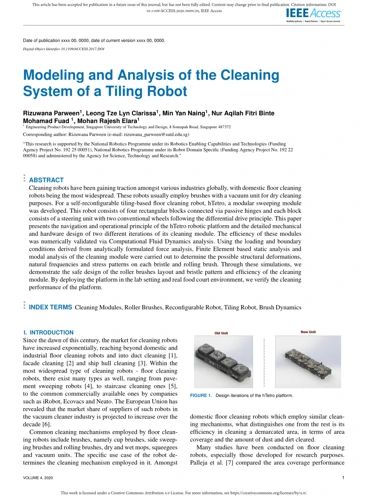
When it comes to smart vacuum cleaners, there’s more to consider than just the mechanical and technological features. In fact, the ergonomics of these devices play a vital role in their overall performance and user satisfaction. From weight and portability to cleaning and durability, every aspect of a vacuum cleaner’s design can impact the user experience. Let’s dive into some of the ergonomic features you should keep in mind while choosing a smart vacuum cleaner.
Weight and Portability
Weight and portability play a crucial role in the usability of a smart vacuum cleaner. If a cleaner is too heavy or bulky, it can be difficult to move it around the house or even store it properly. Here are some crucial elements that influence weight and portability:
- Motor Size: Most smart vacuum cleaners have a small motor that takes up less space, reduces weight and creates more portability. A smaller motor doesn’t mean less suction power though – manufacturers have found innovative ways to maximize motor efficiency without increasing size.
- Material: When designing a smart vacuum cleaner, companies must consider the materials used in the construction. Materials such as plastic or lightweight metal alloys can reduce weight without sacrificing sturdiness or durability.
- Size and Design: A smaller device with fewer components may result in a lighter vacuum cleaner. Designers should also take into account the placement and size of handles, the shape of the body and the location of the wheels to ensure that the device can be easily carried and operated.
- Battery Type: The type of battery used in the device can make a significant difference in weight and portability. Lithium-ion batteries, for instance, are often lighter and more compact than older battery technologies. They are also more efficient, have a longer charging cycle and higher battery life, reducing the need for constant recharging.
Designing a Smart vacuum cleaner that is lightweight and portable is no easy task. The right combination of motor size, material selection, size and design, and battery technology contribute to a more convenient and comfortable user experience when using the device around the house.
Cleaning of the Device
Maintaining a clean vacuum cleaner is crucial for its longevity and optimal performance. Here are some important factors to look for when it comes to the cleaning of the device:
- Easy Accessibility: The device should be designed in a way that the internal components can be easily accessible for cleaning. This includes easy removal of the brush roll, filter, and dirt canister.
- Washable Filters: Having a washable filter can save money and time in the long run. Instead of replacing the filter every few weeks or months, it can be washed and reused, reducing the amount of waste generated.
- Detachable Dirt Canister: The dirt canister should be detachable for easy disposal of collected debris. It should also be easy to open, empty and clean. A well-designed dirt canister with a high capacity makes the device more efficient by reducing the frequency of emptying.
- Brush Roll Cleaning: The brush roll should be easy to remove and clean. It should be free of tangled hair or debris which could impede its function. Regular cleaning of brush roll maintains suction power and efficiency.
- Noise Reduction: The components responsible for producing noise such as motors, filters, and brushes should be designed so that they can be easily removed and cleaned, reducing the amount of noise produced as dirt and debris build up inside the device.
- Cleaning of External Components: The device’s exterior should be durable and easy to clean. It should be able to withstand frequent cleaning without scratching, cracking, or incurring any other form of damage.
These features not only make cleaning the device easy but also prolong the lifespan of the vacuum cleaner by reducing the chances of damage caused as a result of improper cleaning.
Robustness and Durability
When it comes to smart vacuum cleaners, robustness and durability are critical design elements that can have a significant impact on a device’s ability to function correctly over the long term. Here are some of the components that can affect a smart vacuum cleaner’s ability to hold up and provide optimal performance for years to come:
| Design Element | Description |
|---|---|
| Materials | The materials used to construct the vacuum cleaner can influence how long the device performs optimally. Smart vacuum cleaners made from high-quality materials that are resistant to wear and tear, such as carbon fiber and aluminum, are likely to last longer than those made from cheaper, less durable materials. |
| Protection from Impact | The smart vacuum cleaner’s ability to withstand impact is an important factor that can determine the device’s lifespan. The more durable the device is, the less likely it is to be damaged if bumped against walls or furniture while in use. Shock-resistant materials and components, such as thick rubber bumpers, can help protect the vacuum cleaner from damage. |
| Cleanability | A smart vacuum cleaner that is easy to clean and maintain would likely last longer than one that isn’t. Smart vacuum cleaners with easily detachable components are easy to clean, and since they don’t require disassembly, time and resources are saved in maintaining the device. |
| Resistance to Water and Dust | Smart vacuum cleaners that are resistant to water and dust are likely to have a longer lifespan than those that aren’t. This is because water and dust can damage the device’s internal components, causing it to malfunction or stop working altogether. Robust and durable smart vacuum cleaners designed to resist water and dust intrusion are therefore a smart choice that can provide long-lasting performance. |
By including robustness and durability as concern in design, smart vacuum cleaner manufacturers can deliver quality devices that can withstand the test of time, provide consistent performance, and deliver a better user experience.
Power Consumption:
As smart home devices become increasingly popular, energy consumption is an important factor to consider. Smart vacuum cleaners are no exception, with their electricity usage and battery life being key considerations. In this section, we will explore the various power-related factors that can affect a smart vacuum cleaner’s performance, from its energy efficiency to its battery life and charging capabilities. Let’s dive in and take a closer look at these aspects.
Energy Efficiency
One of the key considerations when choosing a smart vacuum cleaner is its energy efficiency. Energy efficient devices not only save you money on your electricity bill, but they are also better for the environment. Below is a breakdown of the energy efficiency features to look for in a smart vacuum cleaner.
| Feature | Description |
|---|---|
| Motor Efficiency | The efficiency of the vacuum cleaner’s motor is a major factor in its energy consumption. Look for a vacuum cleaner with a high-efficiency motor to reduce its electricity usage. |
| Power Settings | Many modern smart vacuum cleaners offer variable power settings. This feature allows you to adjust the suction power of the device depending on the surface you are cleaning. By using a lower power setting on hard floors, for example, you can reduce the amount of energy your device uses. |
| Auto-Adjusting Settings | Some smart vacuum cleaners have sensors that detect the type of surface they are cleaning. The device then adjusts its suction power accordingly, ensuring that it uses only the power necessary to clean the area. This feature is particularly useful for homes with a combination of hard floors and carpeting. |
| HEPA Filters | Vacuum cleaners with high-efficiency particulate air (HEPA) filters are more energy efficient than devices that do not have these filters. HEPA filters trap particles such as dust mites, pollen, and pet dander more effectively, reducing the need for the vacuum cleaner to consume more energy to clean the area. |
Choosing a smart vacuum cleaner with energy efficient features can help you save money on your electricity bill and reduce your carbon footprint. When searching for a device, be sure to consider motor efficiency, power settings, auto-adjusting settings, and the presence of HEPA filters.
Battery Life and Charging
One of the critical design elements that can affect the performance of a smart vacuum cleaner is its battery life and charging mechanism. This aspect plays a significant role in the device’s usability, user satisfaction, and overall experience. It is imperative to consider the following factors while evaluating a smart vacuum cleaner’s battery life and charging:
- Battery Type and Capacity: The type of battery used in the smart vacuum cleaner determines its runtime and durability. Lithium-ion (Li-ion) batteries are usually the most preferred type used in modern smart vacuum cleaners as they offer a higher energy density, longer lifespan, and quicker charging times compared to other battery types. Additionally, the battery capacity (measured in mAh or Ah) can also affect the device’s runtime. A higher battery capacity ensures longer and consistent cleaning performance.
- Charging Time and Method: The charging time of a smart vacuum cleaner’s battery is also crucial, especially for users with a busy routine or a large cleaning area. Some devices offer fast charging, enabling the battery to charge fully in a short period, usually a few hours or less. Others may take longer to charge, depending on their battery capacity and charging method. Most smart vacuum cleaners come with a docking station that facilitates wireless charging, while others may require manual battery removal for charging.
- Auto-Recharge and Resume: An innovative feature that some smart vacuum cleaners offer is the ability to self-recharge and resume cleaning autonomously. These devices can automatically dock and recharge their batteries when the charge level drops below a certain threshold, ensuring that they are always ready for use. Once fully charged, the device resumes cleaning from where it stopped previously, saving users time and effort.
- Battery Protection: Another critical design element related to battery life and charging is the battery protection mechanism. Smart vacuum cleaners that have overcharge, over-discharge, and overcurrent protection can help prevent battery damage, enhance the battery’s lifespan, and ensure safety during charging.
The battery life and charging mechanism of a smart vacuum cleaner can directly affect its performance, usability, and user satisfaction. While choosing a smart vacuum cleaner, consumers must consider this design element and evaluate the device’s battery type and capacity, charging time and method, auto-recharge and resume, and battery protection features. Doing so can help ensure the best experience and value for money.
Conclusion
After going through the various design elements that can affect the performance of a smart vacuum cleaner, it is clear that choosing the right model isn’t a straightforward process. However, by taking into account the various features outlined in this article, you can make an informed decision and choose a smart vacuum cleaner that fits your needs effectively.
Ultimately, the effectiveness of your smart vacuum cleaner depends on the quality of its mechanical components, technological features, interface elements, ergonomic features, and power consumption. Features such as brush design, suction power, and noise reduction processes are crucial for effective cleaning, while sensors, voice control integration, and smart navigation make cleaning easier and more efficient.
Another important factor to consider when choosing a smart vacuum cleaner is its interface elements, such as app compatibility, user experience, displays, indicators, and button location. These elements should be intuitive and user-friendly, enabling you to operate the device without any difficulties.
Additionally, the weight, portability, cleaning, and durability of your smart vacuum cleaner are crucial for long-term use, especially if you have a larger home or cleaning business. You want to choose a model that is easy to clean, robust, durable, and lightweight to ensure optimal performance.
Finally, your choice of a smart vacuum cleaner should be energy efficient, with a long battery life and easy charging options. This will result in lower electricity bills and ensure that your device is always ready to use when you need it.
In conclusion, the design elements outlined in this article play a critical role in determining the effectiveness of a smart vacuum cleaner. By taking into account these factors, you will make an informed decision and choose a model that efficiently cleans your floors and carpets, making your life easier and healthier.
Frequently Asked Questions
What factors should be considered when choosing a smart vacuum cleaner?
When choosing a smart vacuum cleaner, it’s important to consider the mechanical components, technological features, interface elements, ergonomic features, and power consumption. All of these elements can have an impact on the vacuum’s performance and usability.
What is the best design for a vacuum brush?
The best design for a vacuum brush is one that has strong suction power and is able to pick up dirt, debris, and pet hair effectively. The brush should also be easy to clean and maintain.
How can suction power be improved in a smart vacuum cleaner?
Suction power can be improved in a smart vacuum cleaner by using a high-quality motor, optimized airflow, and an effective filtration system that can capture even the smallest particles.
Are larger dirt canisters always better?
While larger dirt canisters may seem like a better option, they can actually make the vacuum cleaner heavier and harder to maneuver. It’s important to find a balance between canister size and overall weight and portability.
What kind of noise reduction processes are used in smart vacuum cleaners?
Smart vacuum cleaners use a variety of noise reduction processes, such as sound insulation, vibration reduction, and motor optimization. Some models may also have a “quiet mode” or scheduling options to minimize noise during specific times of the day.
What is sensor technology in smart vacuum cleaners?
Sensor technology in smart vacuum cleaners allows the device to navigate around obstacles, avoid falls, and detect areas that need extra cleaning. These sensors can range from basic touch sensors to advanced laser-guided mapping systems.
Can smart vacuum cleaners be controlled with voice commands?
Yes, many smart vacuum cleaners have voice control integration with virtual assistants like Amazon Alexa and Google Assistant. This allows users to start and stop cleaning sessions, change settings, and even schedule cleaning times using just their voice.
What is smart navigation in a vacuum cleaner?
Smart navigation refers to the ability of a vacuum cleaner to navigate around obstacles, create efficient cleaning paths, and use advanced mapping technologies to remember the layout of a room. This can help to optimize cleaning efficiency and reduce the amount of time it takes to clean a space.
How can app compatibility improve the user experience of a smart vacuum cleaner?
App compatibility allows users to control their smart vacuum cleaner from their smartphone or tablet. This can provide more control over cleaning sessions, help to monitor the device’s performance, and even allow for remote troubleshooting.
How important is battery life in a smart vacuum cleaner?
Battery life is a critical factor in a smart vacuum cleaner, as it determines how long the device can run before needing to be recharged. It’s important to choose a model with a battery that can support longer cleaning sessions, or one that can automatically return to its charging dock when the battery is low.





